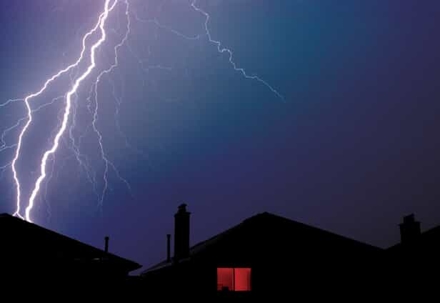A Guide to Power Surge Safety
Power surges are some of the most common and detrimental when it comes to electrical hazards around the house. A power surge can cause significant damage to appliances, electronics, and other devices throughout your home. When it comes to preparing for and dealing with a power surge, you need both a strong offense and defense.
Read on to learn more about how you can handle and prepare for a power surge.
What Is a Power Surge?
A power surge is when electricity flows at higher power than normal. The typical voltage level for a standard household appliance and electronics is 110 volts in the U.S. Appliances like your electric range, dryer, and Level 2 EV charging station can run as high as 220 volts. When significantly more voltage comes through your electrical wires, we call it a power surge. Regardless of whether the power surge is large or small, it can cause considerable damage to electric devices in your home or business.
What Causes Power Surges?
Generally speaking, a power surge can happen in one of three ways: an interruption in the flow of electricity (a short), electricity is sent back into the system interrupting power delivery (feedback), or a sudden increase of voltage is sent through the grid from an internal or external force.
The Main Causes of a Power Surge
While there are countless reasons why a power surge can occur, there are four main reasons:
Electrical Overloads
An electrical overload occurs when too much power is drawn from a single circuit. The most common culprit is overusing extension cords and power strips in the same circuit. A power surge is common after an electrical overload.
Faulty Wiring
Damaged or exposed electrical wires are often hidden behind walls and hard to see. There are a number of signs that faulty wiring is present. If you notice burn marks on your outlets, a burning smell or buzzing sound coming from outlets/writes, or circuit breakers frequently trip, you need to call an electrician to come to investigate right away.
Lightning Strikes
Lightning rarely hits an appliance directly, but it can still do tremendous damage. When lightning strikes power lines or substations, it can send a massive amount of voltage into the power grid.
Power Outage
Power outages are usually the result of a large-scale electrical grid failure. Losing power does not necessarily cause issues, but the return of that power can. When power is returned after an outage, it is common to experience a sudden surge of power.
4 Ways to Deal with a Power Surge
While you may not be able to stop or control external power surges, there are some steps you can take to reduce the impact of internal and external surges. Even if a power surge is unavoidable, you can still prevent them from causing serious damage by taking preventative steps.
Unplug Unused Devices
If you do not want a device or appliance to experience damage from a power surge, the easiest thing to do is to unplug it when not in use. There is a good chance that you have countless electronics around your property that are not in use at all times. Things like toasters, coffee makers, hair dryers, gaming systems, etc., do not need to be plugged in throughout the day.
Unfortunately, you also have plenty of devices that either need to be plugged in all the time, like a refrigerator, or are difficult to unplug, like a dishwasher. For these kinds of devices, you can simply turn off the breaker during severe thunderstorms when a surge is possible. You should also turn off your circuit breakers when the power goes out and leave them off until power is restored.
2. Invest in Surge Protectors
A high-quality power surge protector blocks excess voltage from reaching electrical devices. Point-of-use surge protectors look like power strips, but they provide the added benefits of protection against surges. A surge protector power strip is used directly with your devices and plugs into a regular outlet. These are useful wherever you have expensive electronics, entertainment centers, computers, and appliances.
Electricians can also install a whole-house surge protector. A whole house surge protector is hard-wired to your electrical panel and protects your entire home electrical grid. For the ultimate defense, use both a whole-house surge protector and point-of-use surge protectors to layer your protection.
3. Upgrade Outdated Wiring
If you have an older home, outdated wires and electrical panels can contribute to the frequency and severity of power surges. Homes built as recently as the 1980s may not have the capacity to handle modern electrical needs. Not only does this outdated equipment put you at risk for electrical fires, but you may also run into issues with damage caused by power surges.
4. Consider an Energy Storage System
One way to avoid a power surge from power being turned back on is to ensure that the power never actually goes out. A house battery backup system can keep your lights on, even during a significant blackout.
An energy storage system works by storing power when electricity is available, which is then released when your utility grid is offline. Modern house batteries have programable functions that allow you to control how and when power is used, which means you can keep power flowing to specific circuits or your entire home.
Create Your Game Plan with Watson’s Charging Stations & Electric
If you want to learn more about how to properly prepare your home for a power surge, contact Watson’s Charging Stations & Electric. Not only do we offer complimentary consultations to go over your electrical project, but our team of licensed electricians can also complete the job. We can handle everything from updating your wiring/electrical panel to installing a whole house surge protector to adding energy storage to your home or business. Get an honest assessment and free quote in Gilroy, CA, and the Santa Clara Valley when you call us today.

